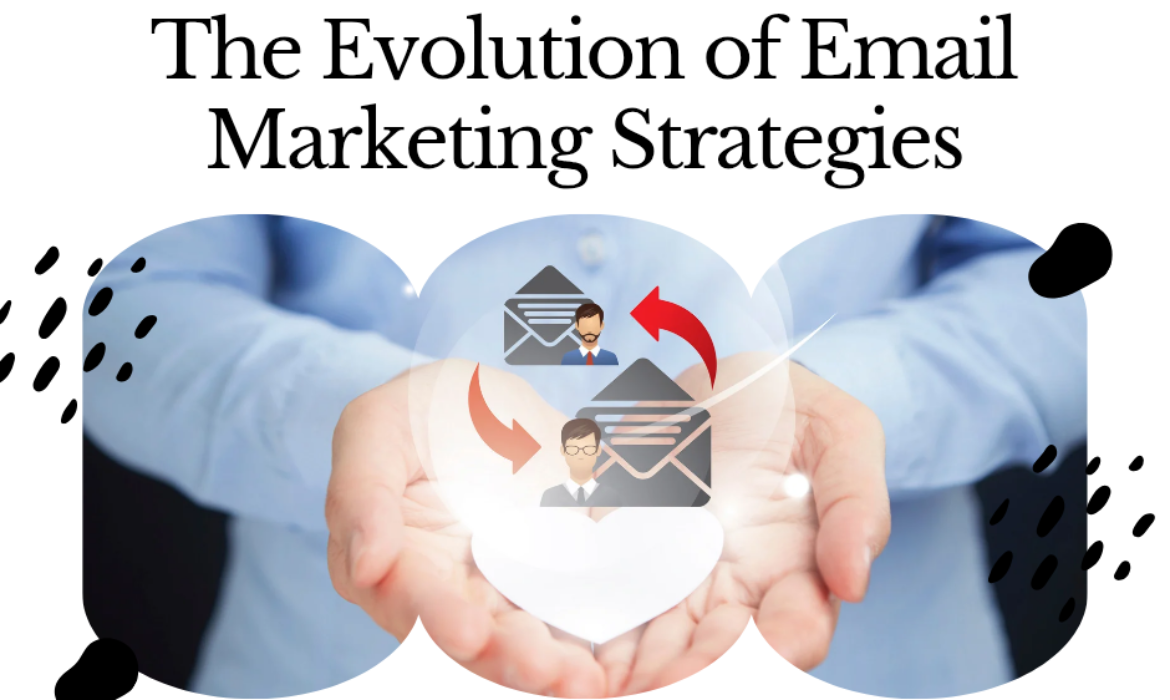081-4797-7173
Email marketing, a cornerstone of digital marketing, has evolved dramatically since its inception in the late 1970s. From simple text based messages to sophisticated, AI driven campaigns, email marketing has proven its resilience and adaptability in the face of emerging technologies and changing consumer behavior.
Today, with over 4.5 billion email users worldwide, the importance of email marketing continues to grow. But where is it headed next? In this article, we’ll explore the evolution of email marketing and what the future holds for this ever changing medium.
A Brief History of Email Marketing
1. The Early Days: Text Only Emails
In 1978, Gary Thuerk sent what is now considered the first ever email marketing campaign. This text only email was sent to 400 people and generated $13 million in sales for a computer company. Back then, email was a novel concept, and its potential as a marketing tool was largely untapped.
2. The HTML Revolution
The late 1990s brought significant advancements in email technology. Marketers began using HTML to create visually appealing emails with images, colors, and clickable links. This development marked the transition from plain text emails to visually rich newsletters, enhancing user engagement.
3. The Spam Era
As email marketing grew in popularity, so did the misuse of the medium. The early 2000s saw a surge in spam emails, leading to the introduction of regulations like the CAN SPAM Act in 2003. These laws aimed to protect consumers and restore trust in email communication.
4. The Personalization Era
By the 2010s, marketers began leveraging data to personalize email campaigns. Dynamic content, segmentation, and automated workflows allowed businesses to send tailored messages based on user behavior, demographics, and preferences. Personalization became the cornerstone of effective email marketing.
5. Integration with Marketing Automation
The rise of marketing automation platforms like Mailchimp, HubSpot, and ActiveCampaign enabled businesses to create complex email workflows. These platforms allowed for advanced segmentation, A/B testing, and real-time analytics, making email marketing more sophisticated and measurable.
Current Trends in Email Marketing
1. Mobile Optimization
With over 60% of emails being opened on mobile devices, responsive design is now a must. Marketers are focusing on creating emails that are easy to read and interact with on smaller screens
2. Interactive Emails
Interactive elements such as sliders, collapsible menus, and embedded videos are becoming more common. These features allow users to engage directly with the email without needing to visit a website.
3. AI and Predictive Analytics
AI is revolutionizing email marketing by enabling predictive analytics, automated content creation, and advanced segmentation. Tools like machine learning help marketers send the right message to the right person at the right time.
4. Privacy and Data Protection
With regulations like GDPR and CCPA, businesses are now more cautious about how they collect and use data. Transparency and ethical data practices are critical to maintaining trust with subscribers.
5. Hyper Personalization
Personalization has evolved from addressing recipients by their first name to delivering entirely customized experiences. This includes recommending products based on browsing history, sending location based offers, and using real time data to craft emails.
What’s Next for Email Marketing?
As technology continues to evolve, so will email marketing. Here are some trends and advancements we can expect to shape the future:
1. AI Driven Hyper Personalization
While personalization is already a cornerstone of email marketing, AI will take it to the next level. Advanced algorithms will analyze customer behavior, preferences, and interactions to deliver highly targeted emails. For example, AI could predict when a user is most likely to open an email and schedule delivery accordingly.
2. Voice Activated Email Interactions
With the rise of smart speakers and voice assistants, the way we interact with emails might change. Voice activated features could allow users to “read” their emails aloud, respond verbally, or even shop directly from an email using voice commands.
3. . Greater Integration with Omnichannel Marketing
Email marketing will become more integrated with other marketing channels. For example, an abandoned cart email could trigger a reminder on social media or a personalized SMS. This seamless integration will ensure a consistent brand experience across all touchpoints.
4. Predictive Content
AI driven predictive content will become more prevalent, allowing marketers to anticipate what type of content will resonate most with each subscriber. For example, an email could dynamically change its content based on the recipient’s browsing history or purchase behavior in real time.
5. Blockchain for Email Security
Blockchain technology could play a role in improving email security and authenticity. By verifying the sender’s identity and preventing spam or phishing attempts, blockchain could restore trust in email communication.
6. Focus on Accessibility
As inclusivity becomes a priority, email marketers will adopt strategies to make emails more accessible. Features like alt text for images, high contrast designs, and compatibility with screen readers will ensure emails reach a broader audience.
7. Sustainability in Email Marketing
As consumers become more environmentally conscious, the sustainability of digital marketing practices will come under scrutiny. Marketers may adopt “green email marketing” strategies, such as reducing email frequency and optimizing file sizes to lower energy consumption.
Tips for Preparing for the Future of Email Marketing
To stay ahead of the curve, businesses should adapt their email marketing strategies to align with emerging trends:
1. Invest in AI Tools:
Use AI-powered platforms to enhance personalization and optimize your campaigns.
2. Prioritize Mobile First Design:
Ensure your emails are fully responsive and provide a seamless mobile experience.
3. Experiment with Interactive Features:
Incorporate elements like polls, quizzes, and clickable buttons to boost engagement.
4. Focus on Data Privacy:
Be transparent about how you collect and use subscriber data, and comply with all relevant regulations.
5. Test and Optimize Constantly:
Use A/B testing and analytics to refine your strategies and improve campaign performance.
Conclusion
The evolution of email marketing has been nothing short of remarkable. From its humble beginnings as simple text messages to its current state as a data driven powerhouse, email marketing has continually adapted to meet the needs of businesses and consumers alike. As we look to the future, advancements in AI, interactivity, and integration with other technologies will further enhance the effectiveness of email marketing.
For businesses, the key to success will be staying informed about emerging trends and adopting innovative strategies that prioritize personalization, engagement, and trust. By doing so, email marketing will remain a vital tool for building relationships, driving conversions, and achieving long term growth in the digital age.
0






